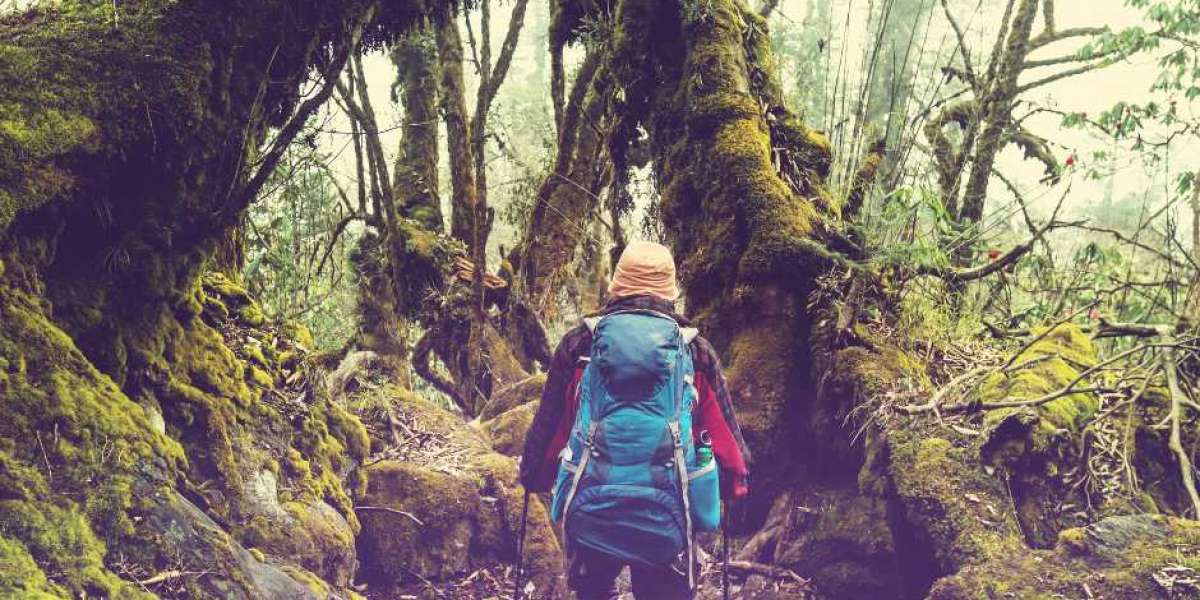The Kanchenjunga Circuit Trekking usually takes around 20 to 25 days to complete, covering a total distance of approximately 200 kilometers. This trek follows the Kanchenjunga Conservation Area, which is home to a diverse range of flora and fauna, including rhododendron forests, magnolia trees, and rare species like Snow leopards, Red pandas, Musk deer, and birds like Shy dragons, Amphibians, pheasants, and many more. This trail will allow you to explore the remarkable valleys, their rich culture, and tradition, native resident, magnificent views of the mountains, etc.
The trekking route takes you through several traditional villages inhabited by indigenous communities such as the Limbu, Rai, and Sherpa people. These villages offer a unique opportunity to experience their rich culture, traditions, and warm hospitality. You can interact with the locals, visit monasteries, and gain insights into their way of life.
Likewise, imagine yourself trekking through the third-highest mountain in the world and the second-highest peak making it one of the most famous and hardest treks of Nepal. Yes! You read that right. Trek to Mount Kanchenjunga will offer you a sunrise that splashes hues of red on a blushing mountain range. Mount Kanchenjunga is located on the far north-eastern side along the border of Sikkim and Nepal in the Himalayas raising an elevation of 8586 meters (28,169ft). It is still considered a remote trekking trail which is still an unexplored virgin trekking route. The first person to climb this mountain was Joe Brown and George Band on 25 May 1995.
Mount Kanchenjunga gets its name from 5 submits giving meaning to its name as “Five Treasures of Great Snow” symbolizing gold, silver, grains, precious stones, and holy scriptures.
We start our trip by arriving in Kathmandu first and flying from Kathmandu to Bhadrapur. On to reach Bhadrpur we will take a day off and next day drive to Illam to Taplejung. From this region, we will legitimately start our trek. We will be hiking from a minimum of 5 hours to a maximum of 8 hours per day. It might be difficult and exhausting at some point but the Paradise is so much more nearby than you think.
For a visual representation of the Kanchenjunga Circuit Trek, you can refer to a Kanchenjunga Circuit Trek Map specifically designed for this route. These maps are available in Kathmandu at our office we provide this map to all trekkers. The map will provide detailed information about the trekking trail, villages, altitude, and other relevant details to assist you during your journey.
Kanchenjunga Circuit Trek overview
- Trek Duration: 24 days
- Trek Grade: Moderate to Difficult
- Highest altitude: 5143meters/ 16873ft
- Accommodation: Hotel and Camping
- Transportation: Flight
- Group size: 1-15 Pax
- Per day walk: 5-7 hours
- Best season: Spring or Autumn
Kanchenjunga Circuit Trekking highlights
- Trek to the 3rd highest peak in the world
- Sightsee unexplored remote trails in the circuit
- Experience Tibetan and Nepali hospitality
- Trek in the trails of snow-capped mountains and Himalayas
- Witness amazing wildlife, flora, and faun
- Observe a unique mix of culture and tradition
- Discover the untouched natural heritage and natural resources
- Amazing waterfalls and glaciers
- Camping in the lap of mountains
Kanchenjunga Circuit Trek Itinerary
Our thoughtfully designed Kanchenjunga Circuit Trek itinerary ensures a comprehensive exploration of the region. Trek through traditional villages like Ghunsa, Yamphudin, and Kambachen, offering cultural insights into the local way of life. The itinerary also includes high mountain passes and scenic viewpoints for breathtaking panoramas of the Kanchenjunga range.
- Day 1: Arrival in Kathmandu
- Day 2:Sightseeing in Kathmandu (1300m/4428 ft)
- Day 3: Fly from Kathmandu to Bhadrapur (45 minutes) and drive to Illam
- Day 4: Drive from Illam to Taplejung (1820m) (3-4hrsdrive)
- Day 5: Trek from Taplejung to Chirwa (1200m
- Day 6: Trek from Chirwa to Lelep (1860m)
- Day 7: Trek from Lelep to Amjilosa (2510m)
- Day 8: Trek from Amjilosa to Gyabla (2730m)
- Day 9: Trek from Gyabla to Ghunsa (3595m)
- Day 10: Acclimatization day in Ghunsa (maximum altitude 4000m) (3595m)
- Day 11: Trek from Ghunsa to Kambachen (4050m)
- Day 12: Trek from Kambachen to Lhonak (4785m)
- Day 13: Trek to Kanchenjunga North Base Camp (5143m)
- Day 14:Trek from Lhonak to Ghunsa (3595m)
- Day 15: Trek from Ghunsa to Sere.La base camp (4200m)
- Day 16: Trek from Sere.La to Cheram (3870m)
- Day 17: Trek from Cheram to Ramche (4580m)
- Day 18: Trek from Cheram to Torongding (2080m)
- Day 19:Trek from Torongding to Sherpa Gaun (2200m)
- Day 20: Trek from Sherpa Gaun to Khebang (1910m)
- Day 21: Trek from Khebang to Happukhola (1050m)
- Day 22: Drive Birtamod from Happukhola
- Day 23:Fly from Bhadrapur to Kathmandu
- Day 24: Departure day
Kanchenjunga Circuit Trek Challenges
The Kanchenjunga Circuit Trek is a tough journey, especially for experienced hikers. The main challenges include going to very high places where you need to get used to the altitude to avoid getting sick. The weather can be tricky, changing a lot from warm forests to cold areas with the chance of sudden snow. The trek is far away from cities, so there aren’t many facilities, making it a bit hard for logistics. Trekkers need to be ready for the tough terrain, with steep ups and downs and difficult river crossings. Getting the right permits, like the Restricted Area Permit and Kanchenjunga Conservation Area Permit, can also be a bit of a challenge. Despite these challenges, the trek gives a special and satisfying experience for those who want an adventure away from the usual paths, surrounded by the amazing views of Kanchenjunga.




